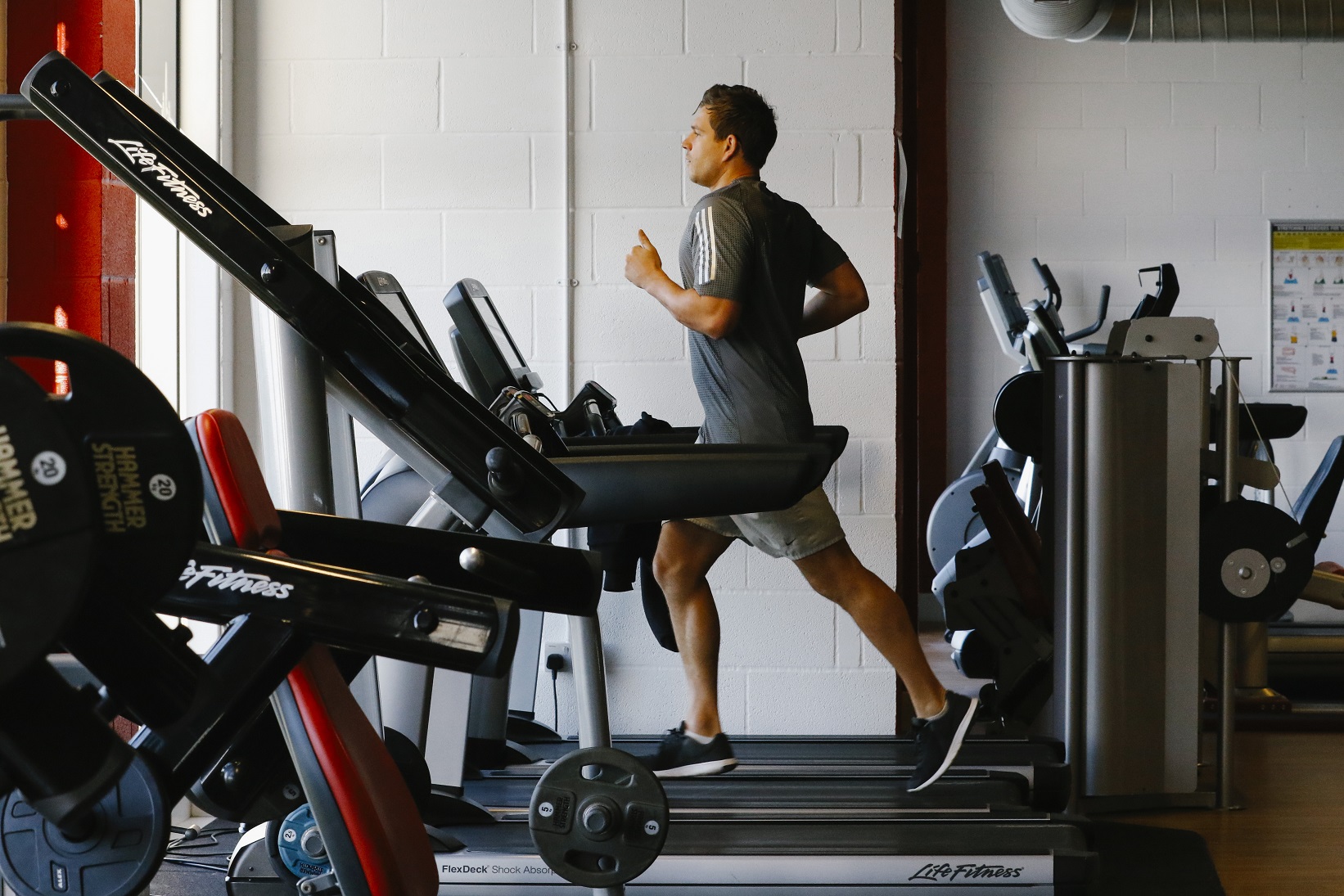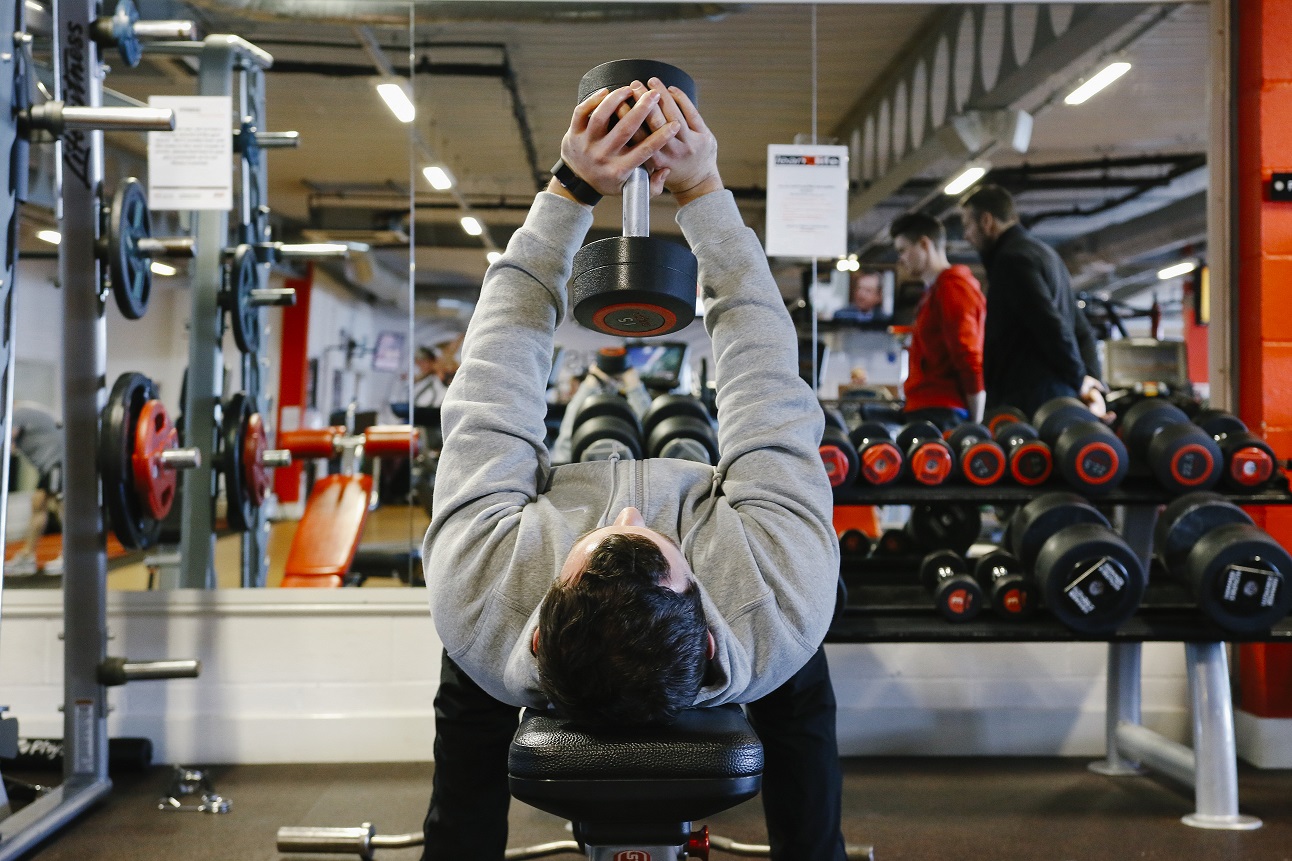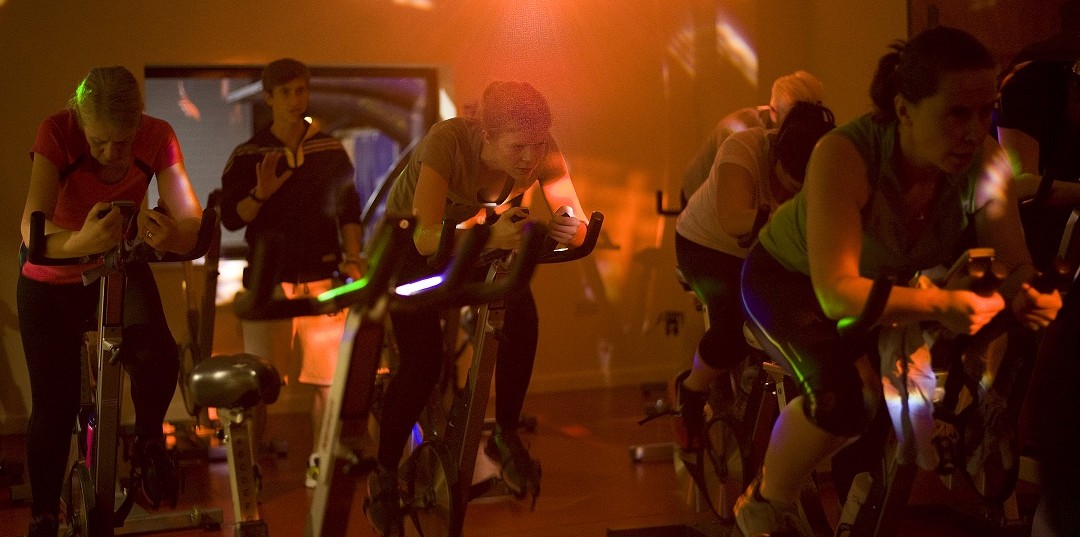The first few sessions of anything new can be nerve-wrecking – especially when there’s new lingo, machines and equipment to, quite literally, get to grips with.
Reps, sets, DOMS, plyo – sorting out all the gym jargon can be enough to bring you out in a sweat, even before you’ve pumped your way through a class. Here’s a quick A-Z to get you going like a pro:
Battle ropes – no, you haven’t walked into the ring! Weighted ropes offer full body strength training, and are great for your core and upper body. If you’re new to the gym or working out, it’s worth getting some direction before hitting the ropes.
Bench press – using a weights bench to lift a weighted barbell. Best to use a spotter (explained later).
BLT – another name for Bums, Legs and Tums; these classes concentrate on toning up and strengthening these areas of the body.
Body combat – non-contact martial arts routines set to music in a class format.
Body pump – a fast paced, weights and cardio workout in a studio/class; improves strength and tones your body shape.
Boxfit/Boxercise – non-combat cardio sessions based on boxing moves.
Burpee – a variation on the squat thrust and a mainstay in a BLT class.
Cardio – the shortened version of cardiovascular exercise; meaning exercise that gets your heart pumping strengthening your heart, lungs and blood vessels. Adults should aim for 150 minutes of cardio a week (kids need to do an hour a day). Also called aerobic exercise or CV.

Circuits – a type of exercise class that involves moving quickly from one exercise to another and doing a set number of each exercise to keep your heart rate high.
Core – this relates to your core muscles, the muscles in the middle of your body that control your balance and stability.
DOMS – Delayed Onset of Muscular Soreness, or that aching feeling you get a day or two after exercise.
Free weights – you can’t take these home with you! Includes dumbbells, barbells and weight plate machines.
Functional training – exercise to help strengthen you for everyday activities like walking.
HIIT – stands for High Intensity Interval Training, a form of cardiovascular training that is good for burning fat. HIIT workouts comprise short bursts of high intensity activity, followed by a short rest session or low intensity activity.
Kettles – before you go and get the teabags, this doesn’t refer to the thing that heats your hot water! Kettles, or kettlebells, are a cast iron or steel weight that looks a bit like a cannon ball with a handle.
Lifting – also known as strength training, weight training, resistance training or ‘pumping iron’. Lifting refers to weight lifting, using weights, kettlebells, dumbbells, bodyweight and resistance machines.
Plates – not what you eat off! Plates are the flat weights you put on a barbell or that are fitted to a weight plate machine.
PB – means personal best; the best time, sets, reps or weight you’ve ever completed.
Plank – a core-stabilising exercise that strengthens your entire body. It looks like a push up but with your forearms resting on the floor, while you hold your body still. It’s harder than it sounds!
Plyo – stands for plyometric. These movements (like explosive skipping and vertical jumps) are designed to increase speed and explosiveness, whilst strengthening joints and muscles.
Progression – means anything you progress in; from increasing weights, to how much you can lift, to the time you can do something in. Track your progression to gauge improvement and see what needs more work.
PT – stands for Personal Trainer. PTs usually work one to one with a client and develop bespoke training plans based on their fitness goals. They also offer support and encouragement when things get tough!
Resistance – this refers to any form of exercise that forces your muscles to contract using an opposing force – likes weights, bodyweight, resistance bands or resistance machines.
Reps – also known as repetitions and refers to repeated movements or exercises.

Sets – this refers to how many times a number of repetitions of the same exercise will be performed before resting and changing exercise.
Spin – spinning is a form of high energy indoor cycling and is a cardio exercise set to music. Spinning classes are led by a certified instructor and will be from 30-60 minutes long.
Spotter – someone who will assist and encourage you during a session, while making sure you’re doing your exercises properly/safely and often you reverse roles, so it could be your gym buddy.
Squat – squats are an exercise that strengthen the thighs, hips and buttocks.
Step – an aerobics class that uses a small platform for you to step on and off to music.
Superset – two exercises performed back to back without rest. They can either work the same muscle group, or opposing groups. A giant, or compound, set is three to four exercises performed in this way.
Yogalates – a mixture of yoga and Pilates.
Zumba – a Latin inspired cardio dance class that mixes salsa, rumba and funk.
Knowing your gym jargon is a great way to begin your fitness journey and feel at home in the gym.

